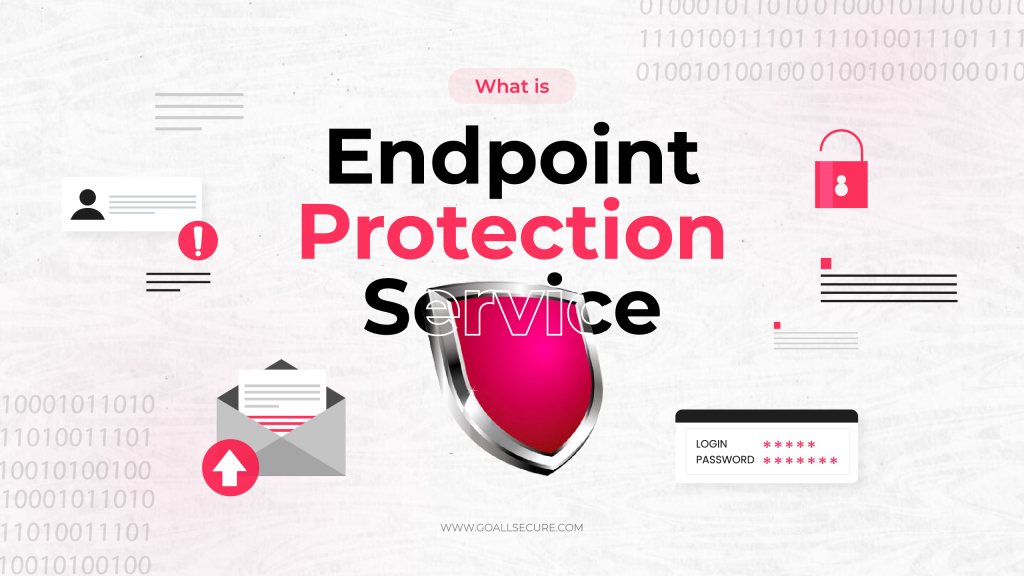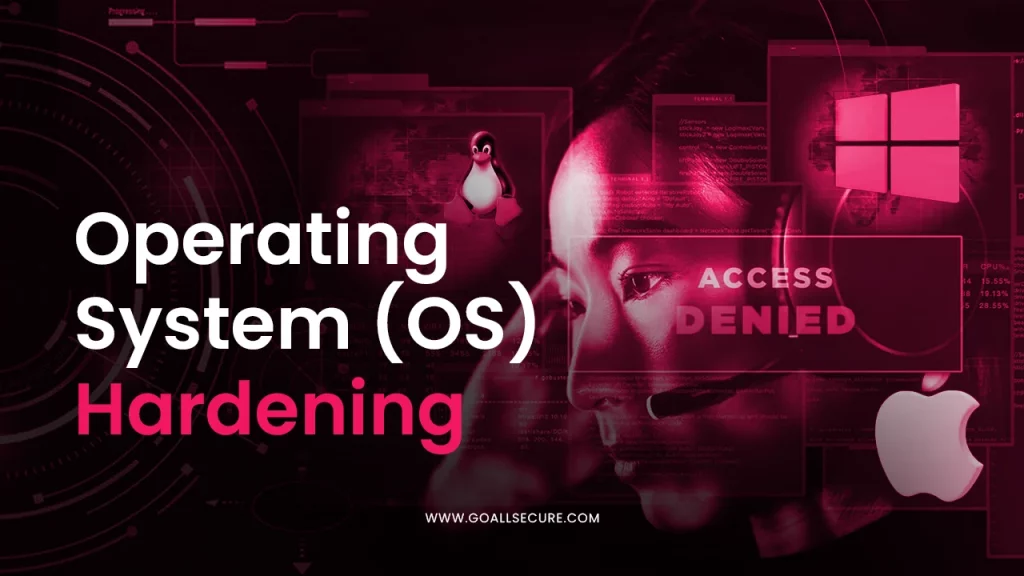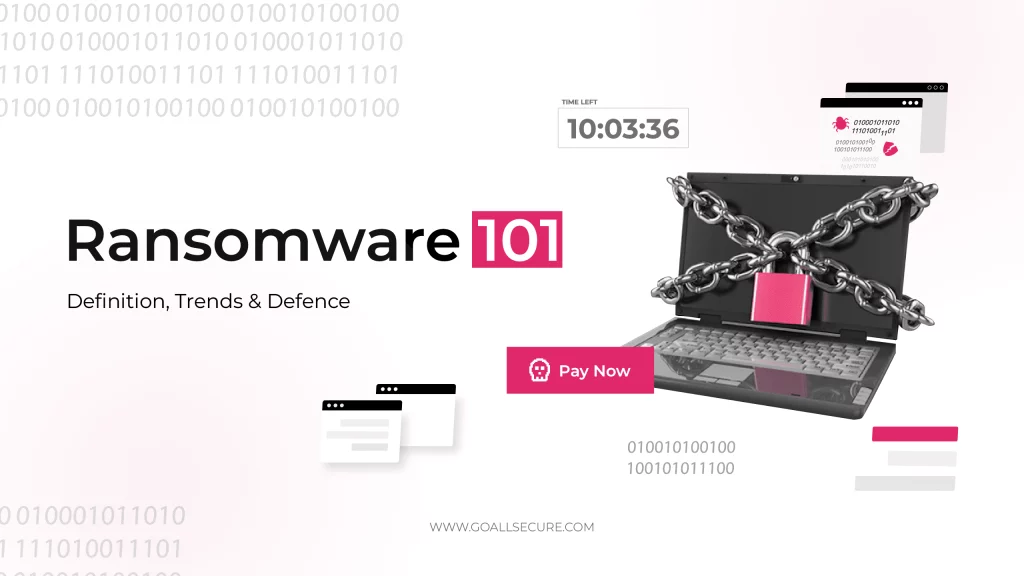You and your device are at risk from ransomware, but why is this particular type of virus so dangerous? The term “ransom” provides all the necessary information on this virus. Extortion software known as ransomware can lock your computer and then demand a fee to unlock it. According to a security analysis, there was approximately $25 billion worth of damages caused by ransomware attacks in 2023, with one attack occurring every 11 seconds. Are you starting to see why it is so dangerous? The extortion-seeking criminal minds frequently go after people or companies who have the highest likelihood of paying the requested amount to have their data returned. That data is, for many businesses, their most important asset. If it is lost, operations may be completely incapacitated. It’s critical to continue proactively using the finest ransomware prevention techniques before attackers can exploit you. To find out more about ransomware and safeguarding your data against potential future intrusions, continue reading!
What Is Ransomware?
Any malicious software that permits unauthorised access to a user’s system is collectively referred to as malware. A type of software known as ransomware requests money to unlock and decode the victim’s files and restore access. Ransomware extorts a victim’s data or device, threatening to lock or permanently damage it unless the victim pays the attacker a ransom.
Ransomware can have catastrophic effects on people, businesses, and even entire nations or localities. These attacks infect the victim’s device, which may be a computer, printer, smartphone, wearable technology, or other endpoint, by taking advantage of flaws in the system, software, network, and physical security. Data loss, erasure, exfiltration, and extortion are possible consequences. In order to prevent these attacks, an organisation needs continuous or routine data backups and a strong security defence.
Types of Ransomware?
Cyber attacks using ransomware can impact anyone, even big businesses and individual consumers. This kind of malware can lock up individual files, such as documents or photos, to whole databases, which can result in massive data breaches or the disclosure of private, sensitive information. The way that ransomware is distributed and the things it affects identify and classify it. Delivery methods include human-operated delivery, automated distribution (not as a service), and ransomware as a service (RaaS). Mentioned below are the types of ransomware:
Crypto Ransomware or Encryptors
Malware that blocks access to a computer until the owner pays is known as crypto-ransomware. The victim’s data are encrypted by this popular ransomware, which then requests payment to provide the decryption key. These attacks are typically carried out by hackers sending their target emails containing malicious attachments. The malware encrypts the target’s files as soon as they are opened.
Lockers
Locker ransomware does not merely encrypt files; it also forces the user to reboot their device. Cybercriminals typically use social engineering techniques to trick the owner into downloading malware in order to access their machine.
Scareware
Scareware fools the user of the device into quickly installing a service or product in an attempt to fix the problem. This popular kind of ransomware tricks customers by pretending to be a warning message that says malware has been found on the target’s computer. These attacks typically take the form of antivirus software that requests payment in order to eliminate malware that doesn’t exist.
Doxware or Leakware
Ransomware, known as “Doxware” or “Leakware”, can exfiltrate or steal confidential information and then threaten to make it public. Modern variations of doxware frequently do both, although older versions usually steal data without encrypting it.
RaaS (Ransomware as a Service)
RaaS is a delivery model rather than a specific kind of malware. It is a subscription-based business model wherein ransomware producers sell their virus to others, who then pay the developers a portion of the revenues from the attack. These associates use software to infect targets and divide any money received in ransom with the creators of the ransomware.
Mobile ransomware
Mobile ransomware, as its name implies, targets tablets and smartphones and demands money to unlock the device or decode the data. These ransomware have developed as a result of the growing use of mobile devices. Android is frequently the target since it permits the installation of third-party apps.
Most Lethal Ransomware Variants in History
There are distinct strains of ransomware under each category that hackers have utilised to launch attacks that have left people and companies in critical condition. However, particular ransomware gangs have distinguished themselves from the rest by being more active and successful than others. The most prevalent ransomware strains and their effects on cyber security are listed below:
CryptoLocker
CryptoLocker, one of the first and most notorious ransomware variants, originally surfaced in 2013. This ransomware encrypts files on a target’s system and demands payment in Bitcoin. Hackers distributed it via the Gameover Zeus botnet. Today, modified versions of this ransomware are affecting millions online.
TeslaCrypt
In 2014, TeslaCrypt launched its first attack, primarily aimed at video game players, with the goal of infecting gaming files. Like most other ransomware strains, this one encrypts important data and infects devices. But it only looks for files that are smaller than 268 MB. In 2015, it became noticeably more common.
LockBit
Operating since September 2019, LockBit is a ransomware-as-a-service (RaaS) that encrypts data. This particular ransomware was created with the intention of encrypting huge organisations quickly in order to evade discovery by security professionals.
WannaCry
The first well-known example of cryptoworming—is ransomware, which can infect further machines connected to a network. More than 200,000 computers in 150 countries were targeted by WannaCry. WannaCry ransomware not only encrypted private information but also threatened to destroy files if money wasn’t received in seven days.
Petya and NotPetya
Petya encrypts the file system table instead of individual files, which prevents Windows from booting on the infected machine, in contrast to other crypto-ransomware. In 2017, a significant cyberattack, mainly targeting Ukraine, was carried out using a notably altered variant of the virus called NotPetya. NotPetya was a wiper that users could not unlock systems even with the ransom paid.
Bad Rabbit
On October 24, 2017, Bad Rabbit was discovered. It encrypts user file tables and requests payment in Bitcoin to unlock them, resembling WannaCry and Petya in their routines. Bad Rabbit was able to infect Interfax, Odesa International Airport, Kyiv Metro, and the Ukrainian Ministry of Infrastructure via a false Adobe Flash update.
Ryuk
The criminal gang WIZARD SPIDER is responsible for the birth of sophisticated ransomware Ryuk, which targets large enterprises in exchange for hefty ransom payments. Instead of taking advantage of security holes, Ryuk uses phishing, spear phishing emails to propagate itself. It is one of the most financially detrimental ransomware out there.
Locky
Locky is famous for its unique way of spreading via macros buried in email attachments (Microsoft Word files) that appear to be authentic bills. When opened, the document seems to be useless apart from the text “Enable macro if data encoding is incorrect”. If the user enables macros, the virus is downloaded and encrypts all files.
Maze
Maze is a sophisticated crypto-ransomware attacking businesses and institutions worldwide since May 2019. It is ransomware renowned for being the first strain to combine data theft and file encryption. Hackers demand a cryptocurrency payment in exchange for the release of stolen files. If the targets refused to pay ransoms, this data would either be sold to the highest bidder or made publicly available.
Ransomware Trends in 2024
Defensive strategies and definitive trends against ransomware attacks begin with an understanding of their past and their effects on cyber security. The following is how ransomware infections typically happen. First, the device is compromised by the malware. The encryption of specific files or the operating system as a whole depends on the type of ransomware. Next, the victim is asked to pay a ransom. Once the ransom is paid, the victim gains control back. However, double-extortion and triple-extortion ransomware attacks have emerged in recent years, significantly raising the stakes. There is a risk even for victims who carefully keep data backups or voluntarily remit the first ransom demand. Here are speculated trends for ransomware in 2024:
- Ransomware will become a global problem.
- We will see more enhanced and focused attacks.
- Increased use of multi-phase extortion tactics is expected.
- By 2031, victims of ransomware attacks should have to pay over $265 billion in annual damages.
- The number of ransomware attacks is increasing severely
- By 2025, 30% of governments worldwide are expected to pass laws regarding ransomware payments.
Attacks without encryption will become a lethal enemy. Some groups have experimented (successfully) with brute-force attacks, in which they just break in and take some data.
How to Prevent Ransomware Attacks in 2024?
It is reasonable to be concerned about the possibility of a ransomware attack on your computer and other devices. Even though there is no foolproof way to halt it, the best method to reduce the danger is to use a multilayered strategy that stops ransomware from accessing networks and systems. Generally, preventing ransomware attacks entails using security solutions with ransomware protection, establishing backups, and continuously testing backups.
Security tools like email protection gateways can serve as the primary line of defence, while endpoint security serves as a secondary line of defence. An Intrusion Detection System (IDS) can significantly help, as it notifies users when ransomware makes a request to a control server. It is sad but true that malware infestations are more straightforward to avoid than to treat. So, on the list of things not to do, installing unreliable software is on top. Additionally, don’t grant all staff members administrative privileges. You can take the following actions to safeguard your information and yourself:
- Maintaining Proper IT Hygiene
- Boosting resilience of Internet-facing applications
- Establishing and improving email security
- Hardening endpoint security
- Keeping offline backups of data to protect against ransomware
- Updating systems often to protect from known exploits
- Well-thought-out Incident Response Plan
- Training employees on security awareness
GoAllSecure can evaluate the cyber security posture of your organisation and assist you in creating the perfect ransomware defence for you. Remember, a strong security posture allows your business to avoid ransomware breaches, and we can help you achieve it. We can help you navigate all the details and protect you and your organisation from cyber threats. For more information about us, kindly call us at +91 85 2723 7851 or +44 20 3287 4253.

















 TRAVEL & HOSPITALITY
TRAVEL & HOSPITALITY HEALTHCARE
HEALTHCARE RETAILS & ECOMMERCE
RETAILS & ECOMMERCE BANKING & FINANCIAL
BANKING & FINANCIAL AutoMobile
AutoMobile MANUFACTURING
MANUFACTURING FOOD
FOOD EDUCATION
EDUCATION



